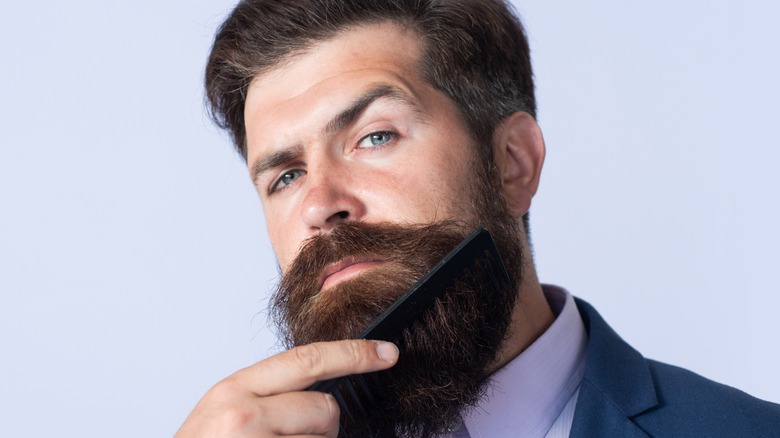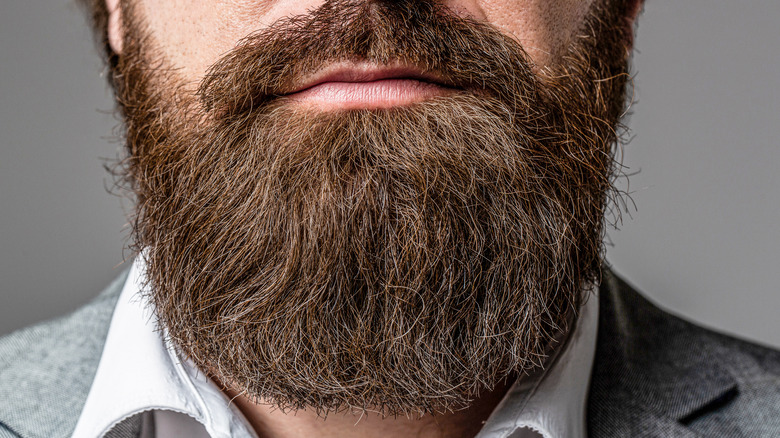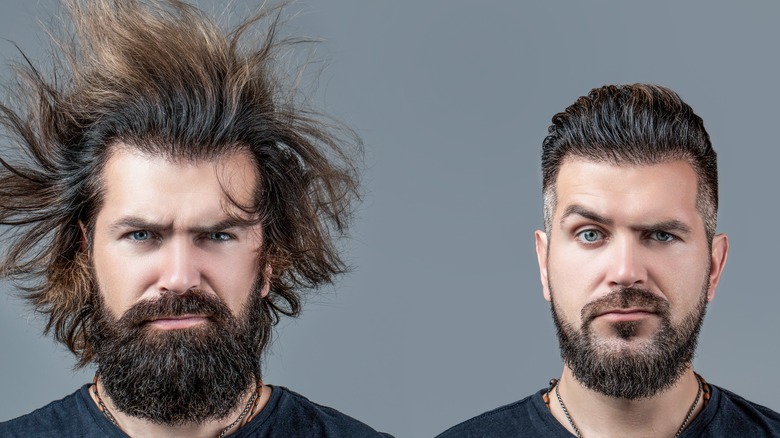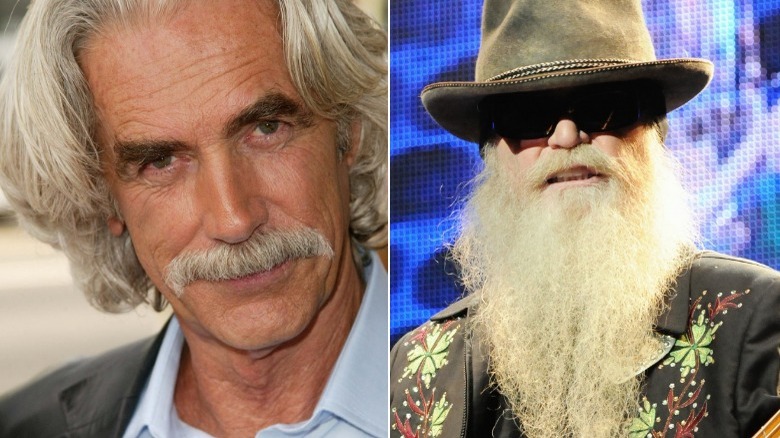Why Men Have Beards According To Science
Nature is full of sexual dimorphism, defined by Britannica as the differences in appearance between males and females of the same species. For example, a few thousand feet under the surface of the ocean, there's the triplewart seadevil, a species of anglerfish with a quirky take on evolution: Female triplewart seadevils grow to be around a foot long, while the males top out at around an inch and a half. Meanwhile, male orangutans grow up to three times larger than females and develop a fat slab of extra face meat at maturity. And that's not all, boy elephant seals grow larger than their girl counterparts, with a wad floppy nose flab used — against all logic– to attract the ladies, according to Treehugger.
As can be seen, sexual dimorphism is everywhere. One of the most apparent for humans is that some can grow beards while others can't, as Healthline explains. The point is, as sexual dimorphisms go, the human beard isn't anything to write home about, but still. What's the point of roughly half of all human beings possessing the ability to develop itchier, warmer faces but not the other half? Researchers have been mulling over that question for years, and here's what they've come up with: A fat, hairy nothing, that's what. But as science goes, there are some theories.
Face prickles that tickle are quite the pickle
Clearly, the face is not the only area of the body that some humans grow hair. Many of us have hair on our heads, our bodies, and around our nether regions (read: genitalia). And as Wired reported in 2020, each of those examples of naturally-occurring human hair serves a purpose from thermoregulation — or to keep us warm — to add protection from germs and bacteria. (Many middle-aged men can attest to this as hair in their ears and noses grows thick and bushy with age.)
As for eyelashes, they help protect our sensitive eyes from dust and particles, while eyebrows help keep our eyes free from sweat. It's reasonable then that facial hair may serve some or all the same functions. But that doesn't really answer why some humans grow facial hair and some can't. Facial hair, for example, does help protect our mouths from unwanted intrusion, but wouldn't non-facial hair-growing members of the species require that just as much as their fluffy-faced counterparts?
Could beards help some people get dates?
According to University of New Mexico professor Geoffrey Miller (via Wired), the most commonly accepted beard theories fall into two camps: Intersexual attraction, or to put it plainly, "It's just science, people dig beards," a theory supported by evolutionary biologist Charles Darwin in his 1871 seminal work, "The Descent of Man" (via The Great Literature). That's a notion the lushly-bearded Darwin himself had a conflict of interest in, it's important to note.
Meanwhile, the second most widely-accepted theory, according to Professor Miller (via Wired), is "intrasexual competition," or some who grow beards do so to scare off their rivals, which is sometimes referred to as the "Pugilism Hypothesis." Even then, the intrasexual competition beard theory breaks down under scrutiny. Could a human beard offer our face and jaw extra cushioning should we come to blows, similar to how a lion's mane protects the neck of a male lion? Scientists explored that question in a study posted on Integrative Organismal Biology from Oxford science, and here's what they found out.
Beards are a little like airbags on our face
According to the 2020 study, "Impact Protection Potential of Mammalian Hair: Testing the Pugilism Hypothesis for the Evolution of Human Facial Hair," furry objects do absorb 30% more impact when struck by something like a punch, which could support the "Pugilism Hypothesis." But when something called the "Handicap Principle" is taken into consideration, a long beard might not be such an advantage after all. Logically, a long beard makes for prime-grabbing material in a fight, so the risks would likely outweigh the benefits.
That's something like how female peacocks are attracted to the long and luxurious tail feathers of the male peacock, though that ornamentation serves no real purpose, according to the 2019 study, "The Handicap Principle: how an erroneous hypothesis became a scientific principle," published in the journal, Cambridge Philosophical Society's Biological Reviews. As Forbes points out, certain humans may grow beards just because they can and we've retroactively conceived a number of theories to explain why that happens.
So in the end, we may never have a definitive answer as to why some dudes grow luscious chin locks. For now, the best we can do is be grateful that they do. If not for facial hair, we wouldn't have mustache-maestro Sam Elliott movies or the catalog of the impressively-bearded rock band ZZ Top. Then where would we be?



